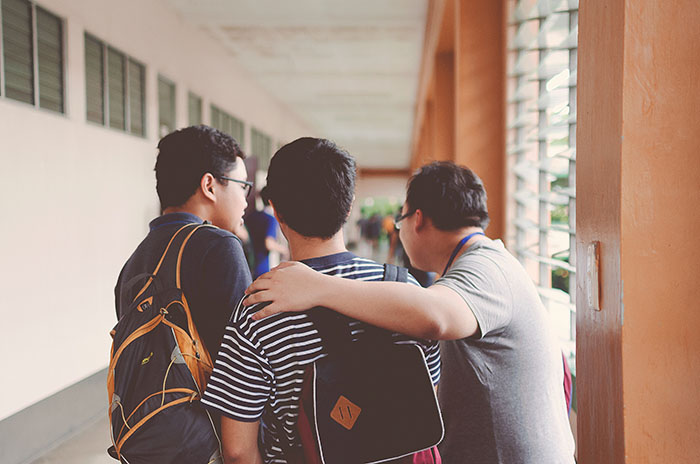KU lands $3M-plus grant to improve educational, career outcomes for students with disabilities

LAWRENCE — A growing body of research is showing that when students with disabilities have ownership in their education and a say in their goals for the future, they have more success in school and a better transition to life after K-12. The University of Kansas has landed a grant to develop and test a new model designed to help students determine and achieve their educational and life goals.
The Center for Research on Learning will administer a $3.2 million, five-year grant from the U.S. Department of Education for the program “Possible Selves and Self-Determination: Improving Transition Outcomes for High School Students with Disabilities.” The program will work with more than 700 high school sophomores with learning disabilities or at risk of learning disabilities at 60 school districts in three states.
Michael Hock, director of KU’s Center for Research on Learning and principal investigator of the grant, said the project will combine two successful interventions designed to help students take charge of their educational paths, set goals, learn behaviors beneficial to academic success, plan for careers and enter higher education.
“The unique feature of this program is that we’re taking two programs that have wide use and combining them into one. The Self-Determined Learning Model of Instruction was developed by Michael Wehmeyer and Karrie Shogren here at KU. We’ll combine that with a program called Possible Selves that I wrote, and I think they will be very complementary,” Hock said.
The grant, administered through KU’s Life Span Institute, will test under three conditions: Without an intervention to see what schools do to prepare students for transition, a randomized control trial of Possible Selves by itself and a randomized control trial of the combined version of Possible Selves and the Self-Determined Learning Model of Instruction, or SDLMI. Students will take pre- and post-tests to determine academic achievement, behavioral progress and success in entering higher education or the workforce.
Possible Selves employs a model that interviews students to gauge their hopes, expectations and fears about life, education and the future. It then helps students realize the value of education as well as how school can help achieve their goals. SDLMI (developed by Wehmeyer, the Ross and Mariana Beach Distinguished Professor in Special Education and director of the Beach Center on Disability, and Shogren, professor of special education and director of the Kansas University Center on Developmental Disabilities) empowers students to take ownership in their education and teaches problem-solving skills and helping students develop plans on precisely how to achieve their educational and life goals while helping teach behaviors and habits necessary for such success.
Throughout the life of the grant, researchers will build the combined model, create professional development modules to help teachers and schools implement the programs and for fellow researchers to gather data. Students’ grade point averages, self-determination skills, goal development and achievement as well as behavioral progress will all be measured. Data will be shared with school districts, teachers, via school district websites and at academic conferences and through academic journal articles detailing results.
Both Possible Selves and SDLMI are currently in use in thousands of schools across the country. The goal of the grant, however, is to both combine them to see if they are more successful when used in combination and to build the body of research behind each.
“There are at least 17,000 copies of Possible Selves in use. But I want it to be more than popular. I want it to be as effective as possible,” Hock said. “What Michael and Karrie bring to the table with SDLMI is a change from having other people do things for you and telling you what you need to do to a mindset of ‘I’m going to take charge and do things that help me get what I want in life.’”
Schools in Phoenix, western Kansas and southern Connecticut will take part in the program. Students’ success with the interventions will be measured, as will teachers’ ability to implement the combined model and integrate it within the existing school system.
“Researchers and educators are realizing you have to have the student on the journey with you,” Hock said. “It’s a partnership between the teacher and student. The buy-in from the student is critical.”
Photo credit: Pexels.com